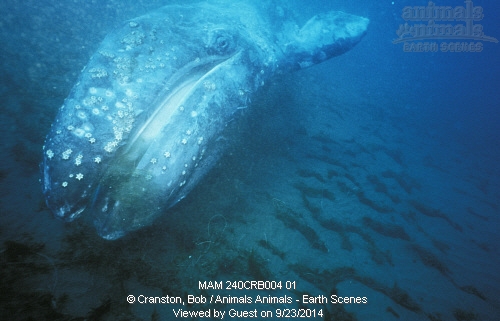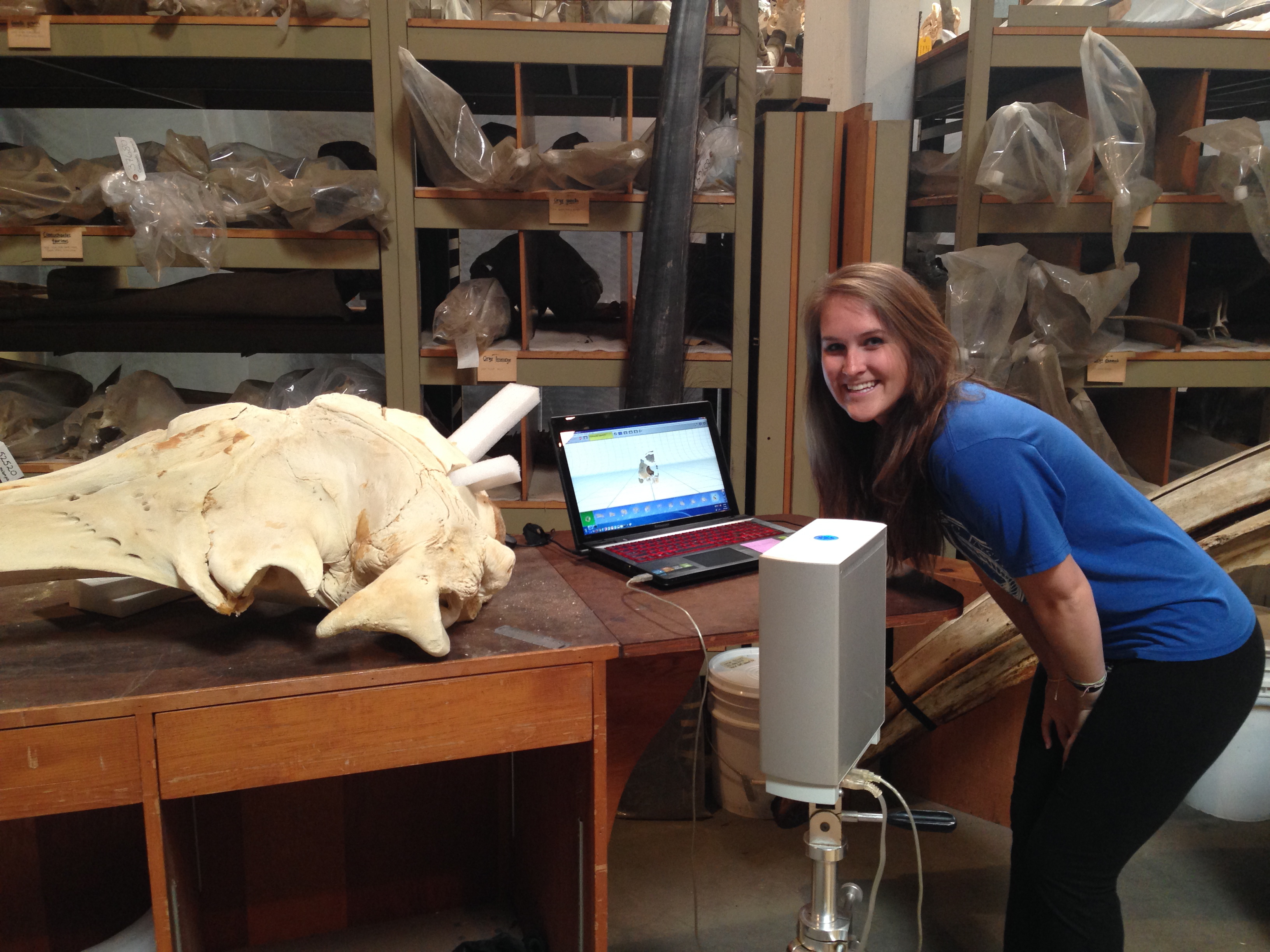About This Project
Gray whales play an important role in the Arctic ecosystem due to their unique style of bottom-feeding. I will be investigating the skull growth and feeding adaptations of the gray whale. There has been no previous investigation on the bone growth of the skull and no one has connected it to their unique feeding style, suction feeding. The results of this study may give us clues on the gray whale's ability to adapt to climate change.Ask the Scientists
Join The DiscussionWhat is the context of this research?
The gray whale feeds using baleen, a hair-like structure hanging down from the roof of the mouth that allows large whales to filter prey out of the ocean. It is the only species of baleen whale that uses suction feeding to filter prey from the ocean floor. The shape and growth of the gray whale skull is also unique and has adapted to fit this style of feeding. With the use of a 3-D laser scanner, I will determine the rate of growth of the skulls and determine what the exact adaptations are that are needed for suction feeding.
What is the significance of this project?
Gray whales play an important role in the Arctic ecosystem due to their unique style of bottom-feeding. They create gigantic mud plumes that re-suspend large volumes of nutrients, which in turn enrich life on the seafloor and bring a bounty of bottom-dwelling crustaceans to the surface for seabirds to feast on. The rapid loss of sea ice appears to be lowering the abundance of gray whales’ bottom-dwelling prey on its traditional Arctic feeding grounds in the northern Bering Sea. Without knowledge of their growth and feeding adaptations there will be no baseline to determine how and why the climate change is affecting the gray whales.
What are the goals of the project?
- Understand the growth rate of the skull of gray whales. This is important because without an average growth curve of the skull the effect of climate change cannot be analyzed for current and future populations.
- Compare the adaptations for suction feeding with the adaptations of other styles of feeding. This will help determine how baleen whales have adapted and evolved to date and predict future adaptations to climate change.
Budget
In order to obtain the data necessary for my project I will have to travel to many museum collections for multiple days. The process of obtaining data includes using a 3-D laser scanner to scan the surface of the gray whale skull, which will then be used to determine the growth and adaptations.
Meet the Team
Team Bio
I am a graduate student at San Diego State University in Evolutionary Biology. Even though I was raised far from an ocean in land-locked South Dakota, I developed my passion for marine mammals at a young age through family trips to the New England Aquarium, Sea World, and Clearwater Marine Aquarium.This project is special to me because not only does it involve such a charismatic and amazing marine mammal, the gray whale, it will help with the conservation of current and future populations of gray whales and other animals within its ecosystem.
When I am not saving the whales, I enjoy anything related with the ocean: surfing, paddle boarding, wake boarding, or even just paddle ball on the beach.
I am a passionate adventurer trying to save one whale at a time.
Lab Notes
Nothing posted yet.
Additional Information


Project Backers
- 30Backers
- 100%Funded
- $2,001Total Donations
- $66.70Average Donation
